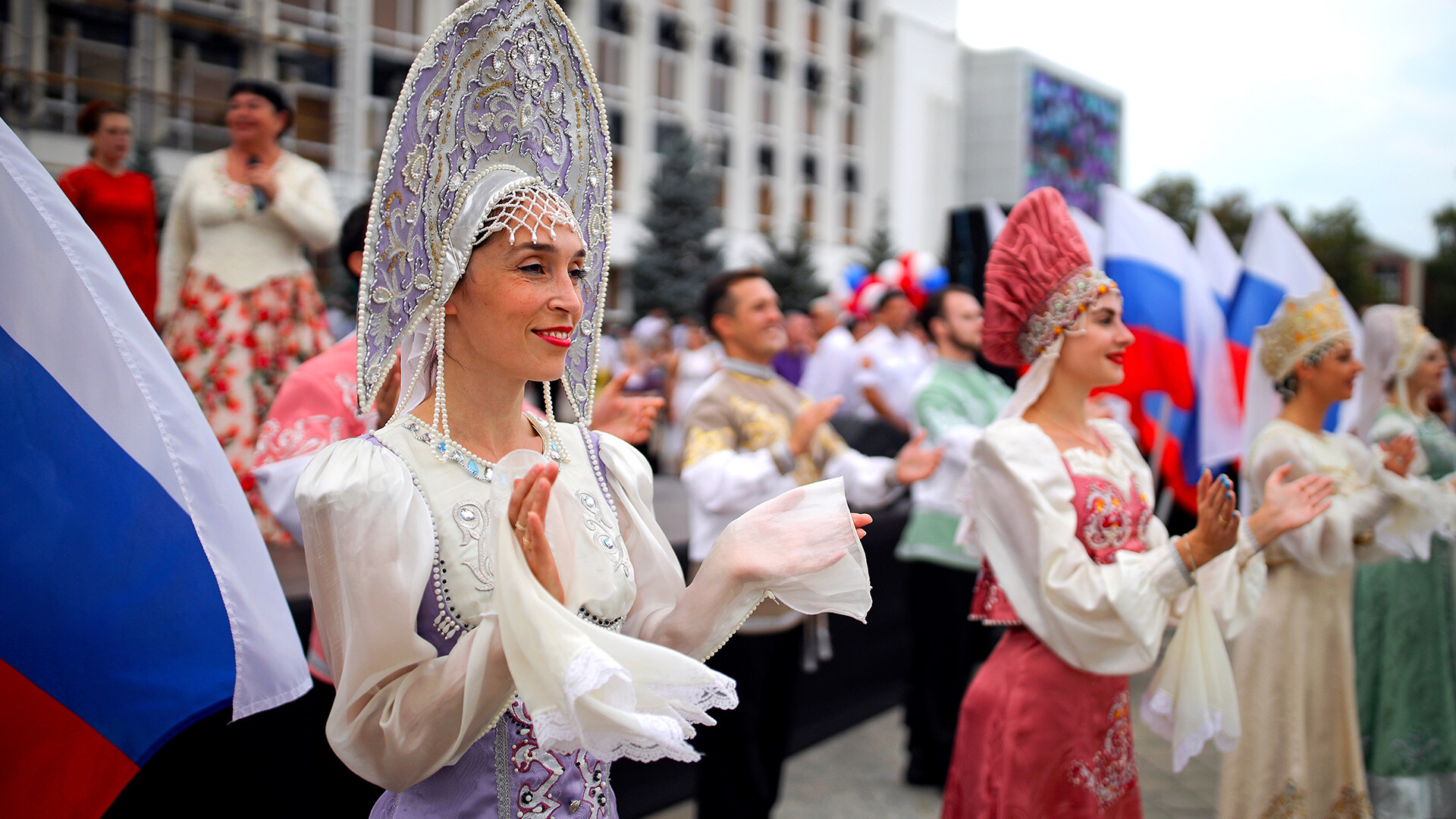
Russian Flag Day celebration
Vitaly Timkiv/SputnikAll Russian republics - along with cities of federal status, oblasts, krais, autonomous districts and the Jewish Autonomous Region - are equal subjects of the Russian Federation, which is emphasized in the country’s constitution. There are a total of 85 different types of regions in Russia.
The word ‘republic’, in this case, does not imply state sovereignty. It is more of a historical tradition, which was formed under the influence of ethnic factors. The modern republics of the Russian Federation are often the heirs of the Autonomous Soviet Socialist Republics (ASSR) and autonomous oblasts. ASSRs were forms of autonomy for the ethnic minorities that inhabited the territory of the USSR.
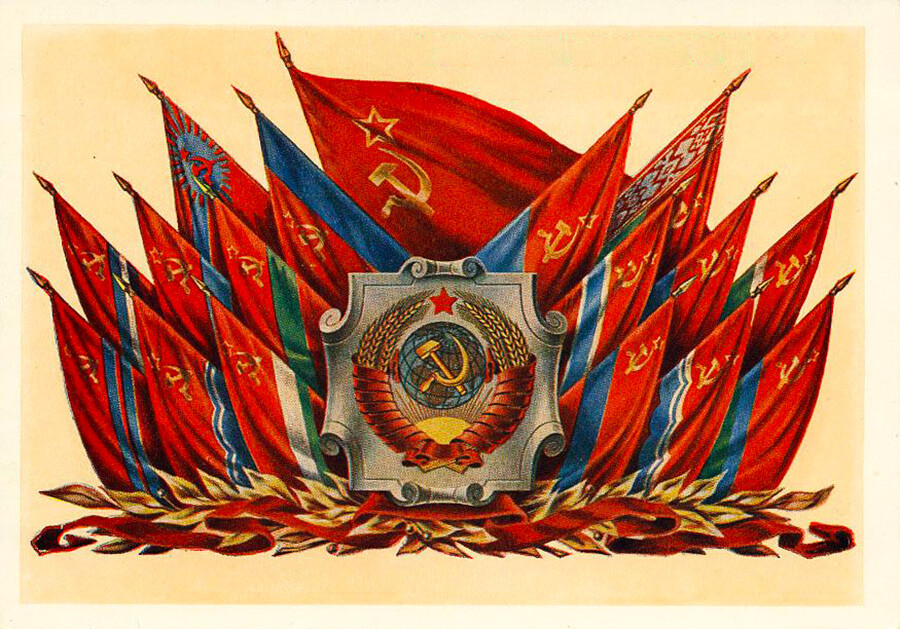
Flags of the Soviet republics
Public domainThe Soviet Union consisted of fifteen Soviet Socialist Republics (or simply Union republics), each with its own administrative-territorial division. Accordingly, some of the Union republics had their own ASSRs.
A large-scale administrative-territorial reorganization of the territories of present-day Russia and its neighbors began after the revolutionary events of 1917, when the people of the former Russian Empire began to fight for various forms of national independence.
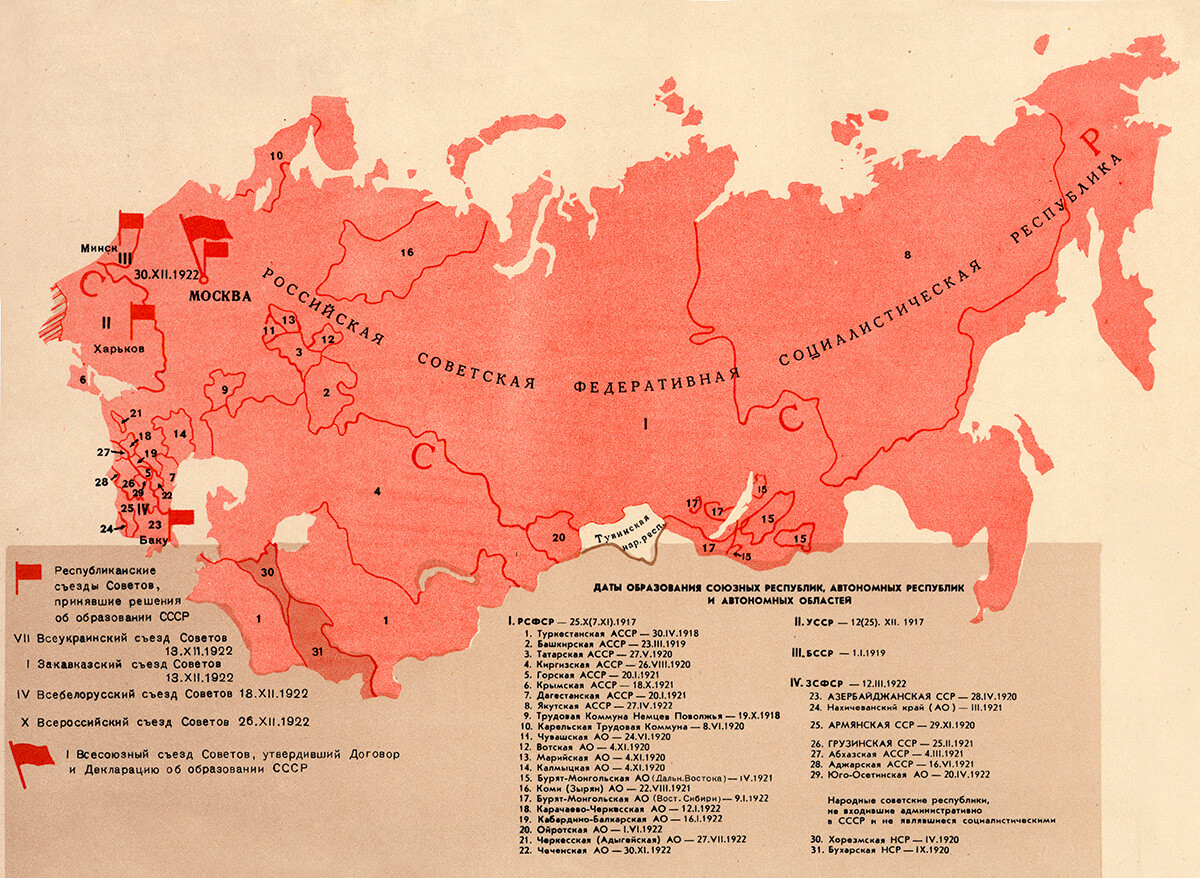
Map of the Soviet Union indicating the states that constitute it and their year of accession from 1917 to 30 December 1922
Fototeca Gilardi/Getty ImagesThe largest territories, the Grand Duchy of Finland and the Kingdom of Poland, subsequently gained full independence from Russia. Smaller administrative-territorial units, representing the regions of concentrated minority settlements, sought autonomy within the country and asserted the rights to their native language and their own executive bodies. In the 1920-1930s, the boundaries and status of these regions were constantly changing: districts were merged, transformed into autonomous regions, and the latter - into autonomous republics.
In Russia (as part of the Soviet Union, it was called the Russian Soviet Federative Socialist Republic), at various times, there were as many as 19 autonomous republics.
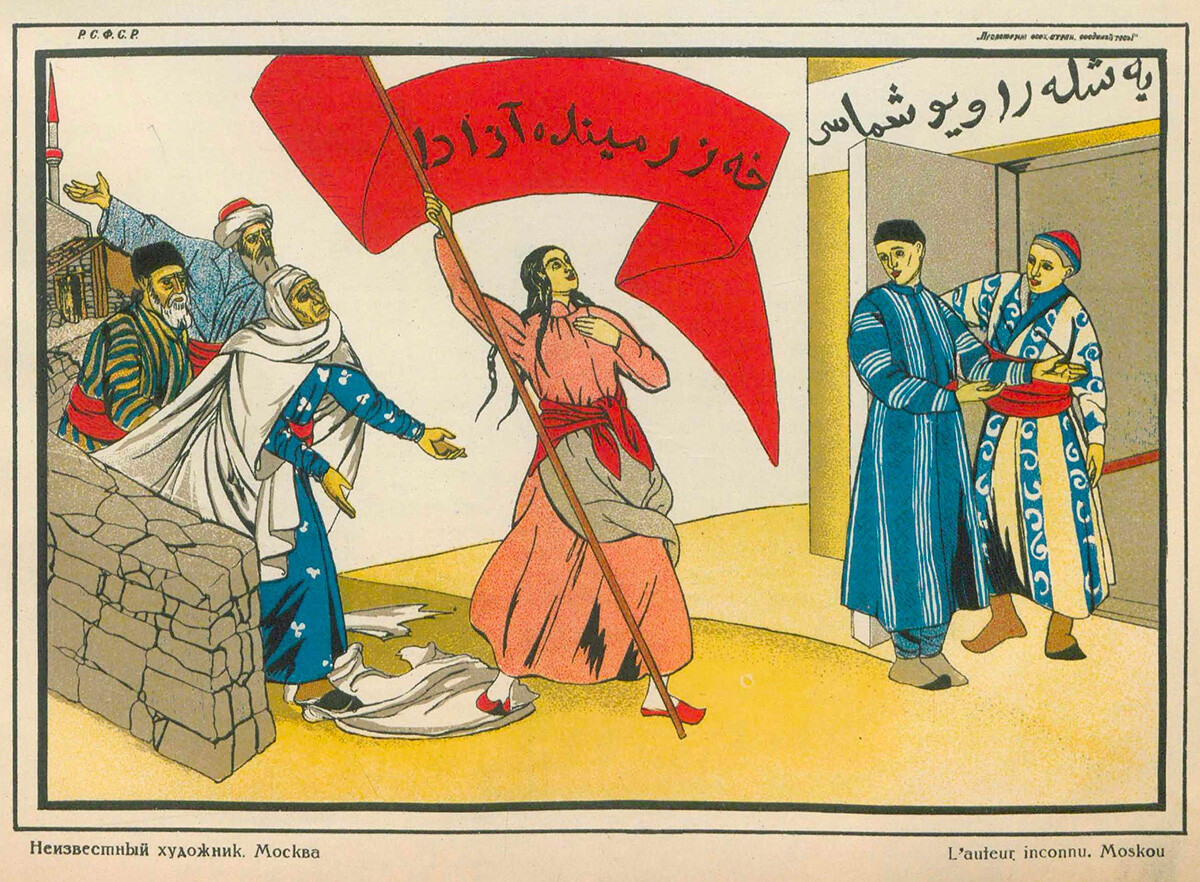
A propaganda poster by an unknown artist, "I am free now!", encouraging young women of Soviet Turkestan to join the Komsomol, 1921
Public domainFor example, the Turkestan ASSR, which, along with the Bashkir ASSR, is considered the first autonomous republic of the RSFSR, existed only until 1924, but spawned two entire union republics, Uzbek and Turkmen.
The Volga German ASSR was divided in 1941 between the Saratov and Stalingrad (now Volgograd) regions. In 1945, the Crimean ASSR became the Crimean Region and then, in 1954, became part of the Ukrainian Socialist Republic. In 1956, the Karelian-Finnish Socialist Republic was “downgraded” to the Karelian ASSR within the RSFSR. Some ASSRs, on the contrary, were promoted to the status of Union republics, for example, the Kazakh ASSR (in 1936) and the Kyrgyz ASSR (in 1926).
By 1961, the number of ASSRs had stopped at 16. It remained unchanged until 1990. The transformation of ASSRs into Russian republics proceeded in parallel with the transformation of the RSFSR into the Russian Federation and the Soviet republics proclaiming their independence during the collapse of the Union.
Some modern republics of the Russian Federation - Adygeya, Altay, Karachay-Cherkessia, Khakassia, Chechnya and Ingushetia - received this status in the 1990s for the first time.
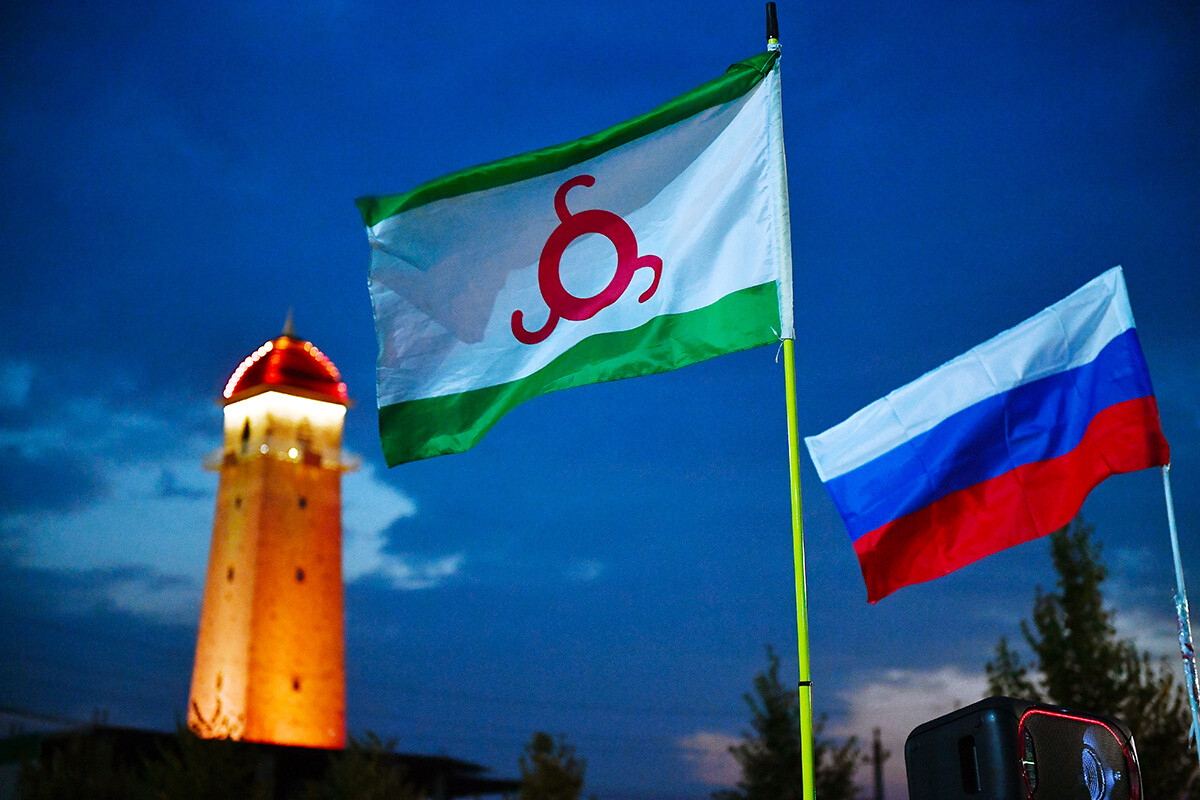
Flags of Ingushetia (L) and Russia
Maxim Blinov/SputnikThe leader of each republic is referred to as the head of the republic. The exception was Tatarstan: they actually had their own president. However, on July 12, 2022, the presidential decree ‘On Amendments to the State Council of the Russian Federation’ also replaced this title with the title of head. The main city in a Russian republic is called the capital, while other subjects have administrative centers.
In some republics - Tatarstan, Bashkortostan and the Republic of Sakha (Yakutia) - residents have customized inserts in their national languages in their passports.
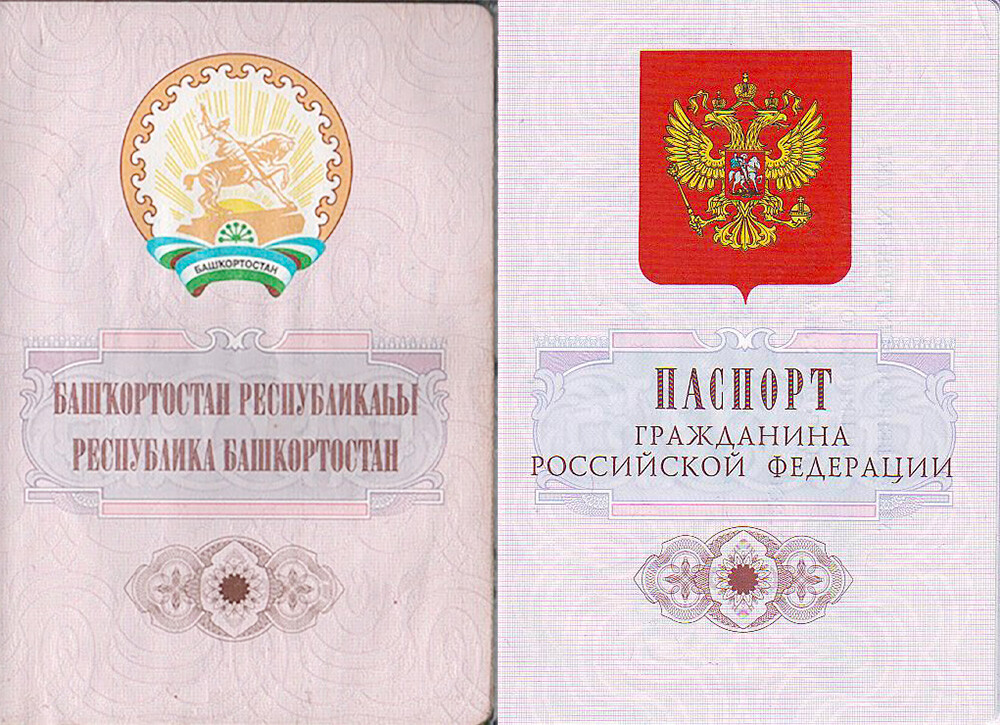
A republic insert in the passport and an all-Russian one
is-pain.livejournal.comIn republics, along with Russian, the languages of their peoples are recognized as state languages. In some places, there are just two languages, while in Dagestan there are as many as 13. On the other hand, in Karelia, only the Russian language holds state status. According to the current laws, the alphabets of the state language of the Russian Federation (Russian) and the state languages of the republics should be based on the Cyrillic alphabet. The indigenous peoples of Karelia use Karelian, Vepsian and Finnish - languages with Latin script, which cannot become state languages (unless the law is changed). On the other hand, their languages have an official status on the territory of Karelia and its inhabitants, like representatives of all peoples of Russia as a whole, have a full right to use and preserve their native languages.

Street name in Russian and in a dialect of Karelian language
Avsolov (CC BY-SA 4.0)All Russian republics have their own anthems. However, the official version of the Dagestan anthem has no words, while Karelia's anthem is only in Russian.
Dear readers,
Our website and social media accounts are under threat of being restricted or banned, due to the current circumstances. So, to keep up with our latest content, simply do the following:
If using any of Russia Beyond's content, partly or in full, always provide an active hyperlink to the original material.
Subscribe
to our newsletter!
Get the week's best stories straight to your inbox